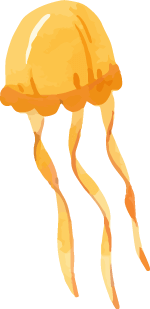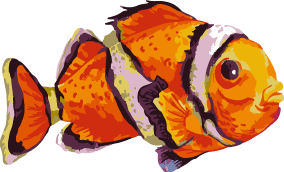FAQs
Below are common questions and our answers about the best way to care for children’s teeth.
How should I clean my baby's teeth?
A toothbrush with soft bristles and a small head, especially one designed for infants, is the best choice for infants. Brushing at least once a day, at bedtime, will remove placque and bacteria that can lead to decay.
When should I schedule my child’s first visit to the dentist?
The American Academy of Pediatric Dentistry recommends that children be seen by six months after their first tooth erupts, or at one year of age, whichever comes first. We will assess your child's dental development and risk of getting cavities. We will also discuss good oral hygiene practices, diet, injury prevention and the need for fluoride supplements. If we find cavities or other problems, these can be addressed early before they become a bigger problem.
How is a pediatric dentist different from other dentists?
All dental specialists (pediatric dentists, orthodontists, oral surgeons, and others) begin by completing dental school, then continue their education with several years of additional specialized training. During training in the field of pediatric dentistry, your doctor gained extensive knowledge and experience in treating infants, children, and adolescents. Pediatric dentists limits his/her practice to treating children only. Pediatric dentists are the primary and speciality oral care providers for infants and children through adolescence.
Are baby teeth really that important to my child?
Some of the primary teeth(also known as baby teeth) will serve the child until at least 12 years of age. Your child’s first teeth play an important role in his/her development. While they’re in place, these primary teeth help your child speak, smile, and chew properly. They also hold space in the jaw for permanent teeth. If a child loses a tooth too early (due to damage or decay) nearby teeth may encroach on that space, which can result in crooked or misplaced permanent teeth. Also, your child’s general health is affected by the oral health of the teeth and gums.
What type of toothpaste should I use to clean my child’s teeth?
Any fluoridated toothpaste that carries the American Dental Association seal is effective in reducing/preventing tooth decay. For children between 2 and 3 years of age fluoridated toothpaste can be introduced. Apply a small pea-sized portion of fluoridated toothpaste on an appropriate child-sized soft bristle toothbrush. Young children should brush with parental supervision and be encouraged to spit out and not swallow excess toothpaste after brushing. For children less than 2 years of age, utilize non-flouridated toothpaste to prevent excess swallowing of fluoride and possible fluorosis (staining) of permanent teeth.
What causes cavities?
The bacteria that cause decay(S. mutans) are aquired by children most commonly from their parents. When these bacteria come into contact with sugary foods left behind on our teeth after eating, acids are produced. These acids attack the enamel on the exterior of the teeth, eventually eating through the enamel and creating holes in the teeth, which we call cavities.
How can I help my child avoid cavities?
Be sure that your child brushes his/her teeth at least twice a day with fluoride toothpaste. Flossing daily is also important, because flossing can reach spots between the teeth that brushing can’t. Avoid sugary foods and drinks, limit snacking, and maintain a healthy diet. Xylitol gum and mints have also been shown to reduce oral bacteria number.
What is baby bottle tooth decay and how can I prevent it?
Baby bottle tooth decay is a pattern of rapid decay associated with prolonged nursing. It happens when a child goes to sleep while breast and/or bottle-feeding. During sleep, the flow of saliva is reduced and the natural self-cleansing action of the mouth is diminished. Avoid nursing children to sleep or putting anything other than water in their bedtime bottle. The sugar content of the stagnant milk is changed to lactic acid which can cause decalcification(white-spots and softening) of the enamel, resulting in early childhood decay called "nursing caries"
My 2-year-old has a cavity in a tooth, should the tooth be fixed?
Yes, it should be treated as soon as possible to avoid pain and infection.
When do the first teeth start to erupt?
At about 6 months of age, the two lower front teeth(central incisors) will erupt, followed shortly by the two upper central incisors. The remainder of the baby teeth appear in the next 18-24 months, but not necessarily in an orderly sequence from front to back. At 2 to 3 years of age, all of these 20 primary teeth should be present.
How can I help my child through the teething stage?
Sore gums when teeth erupt are part of the normal eruption process. The discomfort is eased for some children by use of a teething biscuit, a piece of toast or a frozen teething ring. Your pharmacy should also have medication that can be rubbed on the gums to reduce the discomfort.
My child has a double row of front teeth. Why is this and what should be done?
This is not uncommon. Occasionally the permanent teeth erupt before the baby teeth are lost. When this occurs, we will encourage the child to "wiggle" and attempt to remove the baby teeth themselves. If the primary teeth aren't loose and/or if there is insufficient space for the permanent teeth, we may need to remove the primary teeth. Once the baby tooth/teeth are gone the tongue usually moves the permanent teeth forward to its proper position as long as the space is adequate. If the crowded/two rows of teeth condition occur in the upper jaw, the remaining baby teeth need to be removed. It is sometimes necessary for the permanent teeth to be moved forward with an orthodontic appliance.
Why do permanent teeth look so much yellower than primary teeth?
Baby teeth are a bluish white color and permanent teeth are a yellowish white color. This is due to the outer enamel coating of the tooth and the layer just under the enamel, the dentin. This condition is most notable when just a few permanent teeth are present with the majority of primary teeth still present.
Does my child need dental sealants?
Sealants cover the pits and fissures in teeth that are difficult to brush and therefore susceptible to decay. They are clear or shaded plastic and typically applied to the biting surface of permanent molars which have more grooves and pits than primary molars. We recommend sealants as a safe, simple way to help your child avoid cavities, especially for molars, which are hardest to reach.
My child plays sports. How can I protect his teeth?
Even children’s sports involve contact, and we recommend mouthguards for children active in sports. Athletic mouth guards, are made of soft plastic and fit comfortably to the shape of the upper teeth. They protect a child's teeth, lips, cheeks and gums from sports-related injuries.
Can thumb sucking and pacifier habits be harmful for my child's teeth?
The large majority of children suck their thumbs or fingers as infants, and most grow out of it by the age of four, without causing any permanent damage to their teeth. Prolonged thumb/pacifier habits can create orthodontic problems. If your child continues sucking after permanent teeth erupt, or if he sucks aggressively, let us know and we can check to see if any problems may arise from the habit. We recommend encouragement and positive reinforcement to help children resolve these oral habits.
When should my child have dental X-rays taken?
We recommend taking X-rays around the age of three to five, (when a child will typically be able to tolerate them). The first set consists of simple pictures of the front upper and lower teeth, which familiarizes your child with the process. Then regular (at least yearly) X-rays are recommended. Permanent teeth start coming in around age six, and X-rays help us make sure your child’s teeth and jaw are healthy and properly aligned. If your child is at a high risk of dental problems, we may suggest having X-rays taken more often and/or at an earlier age.











